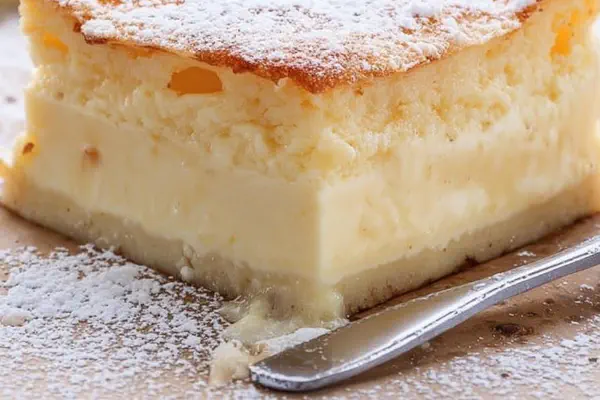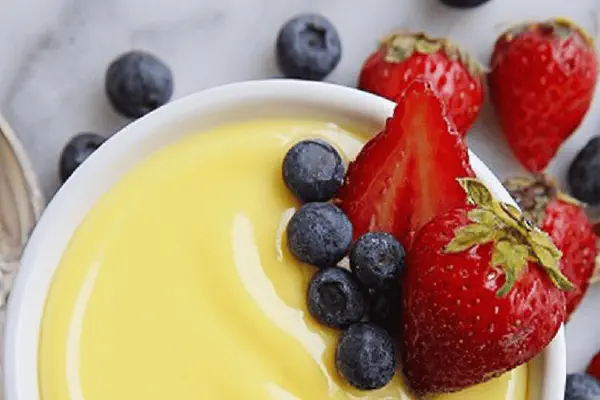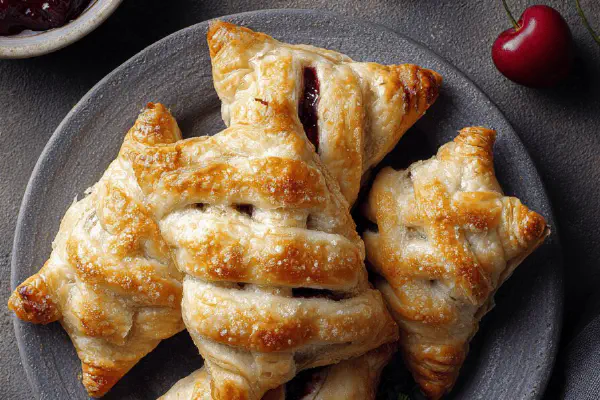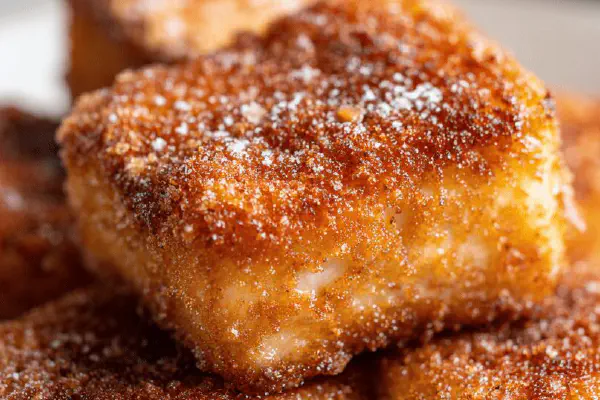Featured Recipe
Vanilla Custard with a Twist

By Kate
"
Thickened custard using cornstarch and eggs. Adjusted sugar and milk volume for lighter texture. Replaces flour with cornstarch for silkier finish. Swaps vanilla extract for almond essence. Technique focuses on constant whisking to avoid lumps and scorching. Plastic wrap pressed on surface prevents skin formation. Chilling slowly to set custard fully. Temperature cues emphasized over timers. Substitutions included for dairy and egg allergy. Tips for troubleshooting common custard issues shared.
"
Prep:
20 min
Cook:
12 min
Total:
32 min
Serves:
4 servings
dessert
French-inspired
custard
Introduction
Custard. Not just eggs and milk heated. Precise collisions of heat and agitation. Start with cornstarch instead of flour; faster thickening, finer texture. Almond essence swapping vanilla, adds complexity. Sugar slightly reduced to let nuttiness shine. Heated milk rather than room temperature—prevents curdling, jumpstarts thickening. Whisking constantly keeps custard smooth, no lumps or scorches. Ditch timers, trust bubbling and coating spoon. Plastic wrap pressed on top saves your sanity—no skin, no waste. Chill for hours; texture builds slowly. Common hiccups solved here—eggs scrambling, lumpy batter, custard too runny. Elevate simple dessert with practical kitchen know-how. Learn to feel the custard, hear the boil, know the finish.
Ingredients
About the ingredients
Sugar quantity reduced about 20% from usual. Cornstarch replaces flour for clearer custard, less pasty mouthfeel. Three whole eggs instead of two increases richness and structure. Milk volume slightly increased for thinner final custard, balances thicker cornstarch slurry. Hot milk is critical to avoid egg curdling; room temp causes lumps. Almond essence used for subtle flavor shift. Vanilla can be substituted if preferred but almond adds a unique aroma. For dairy-free: use oat or almond milk, increase thickener slightly. Egg replacements like aquafaba or commercial vegan thickener possible but yield differs—expect texture adjustments. Whisk dry ingredients first until completely incorporated. Avoid lumps. If lumpy at any point, strain before final chill. Plastic wrap seals moisture, prevents skin which alters texture and appearance.
Method
Technique Tips
Combine sugar and cornstarch off heat to avoid scorching starch. Whisk eggs in gradually so no hot liquid hits eggs cold—tempering crucial to avoid scrambled egg bits. Constant stirring prevents scorching; listen for consistent bubbling rather than vigorous boil. Custard ready when thick enough to coat spoon heavily, ribbons when drizzled back in pot. If it clumps or sticks, reduce heat immediately, whisk swiftly. Adding essence off heat preserves aroma; heat dissipates delicate flavor. Press plastic wrap firmly to stop skin; it traps steam and prevents dry film. Cool custard first at room temp to avoid condensation, then chill minimum 2 1/2 hours for best setting. Stir lightly before serving to loosen. Use custard soon; over-storing causes separation. If separation happens, warm gently and whisk to restore. Practice sensing custard touch, sound, and visual cues over measuring exact minutes. That’s kitchen mastery.
Chef's Notes
- 💡 Constant whisking is key. Don’t stop when heating. Listen for gentle bubbles. It signals you're close. If bubbles rage—low heat fast. Too high, too many lumps.
- 💡 Cornstarch clumping? First, whisk all dry ingredients—sugar thriving with cornstarch. Mix well—no lumps. If it happens? Strain, catch lumps before chilling.
- 💡 Hot milk helps temper eggs—cold milk ruins them. Warm starts thickening process; cold creates lumps. Think of touch—not timing—when assessing.
- 💡 Plastic wrap pressed to surface directly. Prevents skin forming. Don't just lay it on; push down. It's vital. Think texture, not just appearance.
- 💡 Cooling time matters. At least 2 1/2 hours. But longer? Texture improves further. Don’t skip this. Leaving it too short? Changes outcome.
Kitchen Wisdom
What if my custard splits?
First, reheat gently. Whisk vigorously—bring it together. Maybe add a touch of cornstarch to fix texture.
How to store leftover custard?
Keep in fridge, tightly covered. But use it fast. Over time, it separates. Re-whisking might help.
Why is my custard too runny?
More heat needed, or timing off. Fix? Return to heat—stir more. Check consistency along the way.
Can I use non-dairy milk?
Yes, oat or almond works. Adjust thickener slightly. Compare results; texture differs with replacements.



